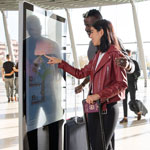
PUBLIC SECTOR
Talk to citizens
Offer advanced digital environments with which to bring citizens closer, open new spaces to interact with them, and provide innovative services.
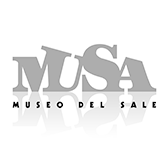
MUSA, the Sale di Cervia Museum, was founded at the end of the 1980s to preserve and revive the historical heritage of Cervia's salt civilization through images, documents, historical objects and testimonials. Located inside the "Torre” salt warehouse, MUSA has an open-air section, the Camillone, the last of the remaining salt mines.
Completely renovated and refurbished in 2004, MUSA is recognized as a Quality Museum of the Emilia Romagna Region, and was recently named after Agostino Finchi, a salt miner and tireless volunteer.
The inside exhibition, very popular with tourists and schoolchildren, includes a bridge that overlooks a historical-geographical reconstruction of the coast and the inland areas. This area was a model and it had to be renewed in order to involve visitors more and allow greater flexibility during guided tours. MUSA called on Touchwindow to design the project.
We studied the location of the model and how it was used, and we decided that an interactive projection would be the most suitable solution, also according to the needs that were expressed by the scientific committee.
We had the goal of creating a floor projection system that would present the content in a non passive way, documenting the entire process of salt production in the various eras, which is deeply intertwined with the history and development of the city of Cervia. We conceived the story as a film that would not be simply seen passively, but would interact with the visitors and support discovery.
At a design level, we designed the projection system so that the technological elements of the installation would respect the architectural constraints imposed by the salt warehouses.
As we developed the film, we created a rich multimedia sequence that, through animations, sounds and three-dimensional reconstructions, tells the story of Cervia, from prehistoric times through the Romans and medieval times up to the contemporary age. The history is intertwined with salt mining, helping the visitor to understand the evolution of the landscape and the importance of the economic power that salt has represented for the growth of Cervia.
The film is made in mixed media and shows numerous three-dimensional reconstructions of the ancient city of Ficocle in the salt mines, up to the foundation of the old city and then today's modern one. Reconstructions of Roman artifacts and archive images help trace the history of the area: the evolution of the coastline, the Roman grid system, the first settlements and development through different eras, and the present day.
The museum requested a tool that could be used both by individual visitors as well as by groups and school children accompanied by a guide. Therefore we installed two operation methods.
One can be used by visitors, with the projection starting automatically when it is activated by a proximity sensor. The second was designed for tour guides and it manages the projection via tablet, allowing the guides to pause the film for explanations, notes and discussion.
After strict testing, which was very important because of the high-traffic space, the installation was inaugurated in 2019, and it was an immediate success with the public.
Dr. Annalisa Canali, director of the museum, said, "The Cervia heritage museum has a dynamic reality that is still thriving and it truly involves visitors, giving them a unique experience.”

Offer advanced digital environments with which to bring citizens closer, open new spaces to interact with them, and provide innovative services.
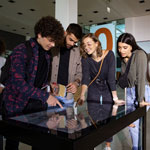
Solutions to attract visitors, entertain them and inform them through digital engagement.
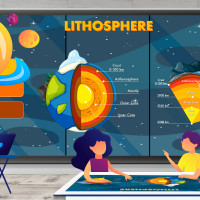
Discover our interactive and immersive solutions for the “Piano Scuola 4.0”, an important opportunity to make schools a participatory environment with engaging teaching methods and more learning opportunities for students.

We’re now a recognized partner of Crestron: expert consultants in the design of AV-over-IP solutions through DM NVX.
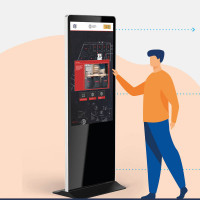
LIFE, the new multimedia space at the Tourin University